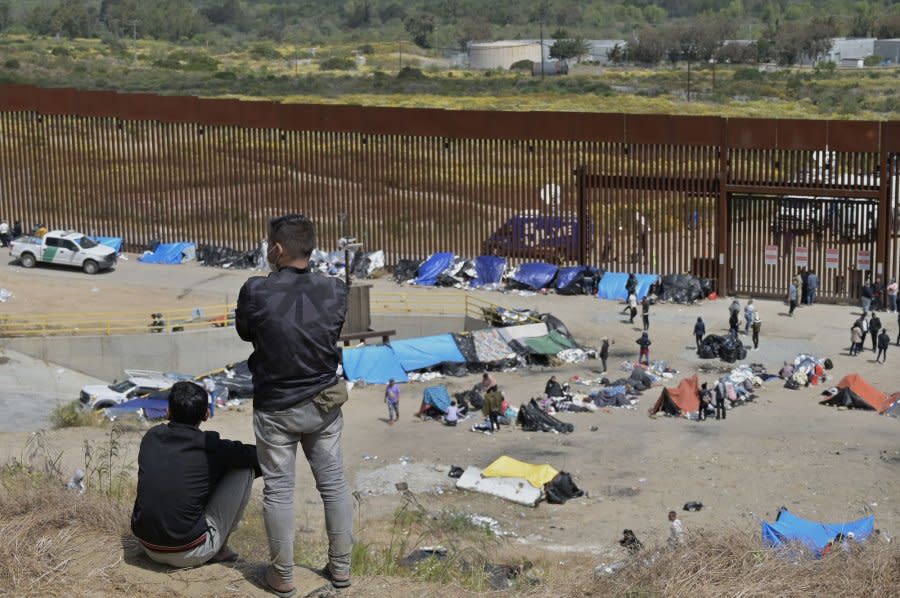Tweaking U.S. trade policy could help reduce migration from Central America

March 29 (UPI) -- Small changes to U.S. trade policy could significantly reduce the number of migrants arriving at the southern border, according to our peer-reviewed study, which was recently published in The World Economy.
Our research delved into the effectiveness of existing trade agreements in creating jobs in migrant-sending countries, with a focus on Central America. We analyzed the impact that the Dominican Republic-Central America Free Trade Agreement has had on apparel exports and jobs since being ratified by the U.S. and six countries -- Costa Rica, El Salvador, Guatemala, Honduras, Nicaragua and the Dominican Republic -- from 2005 to 2009.
CAFTA-DR was aimed at encouraging trade and investment ties. But restrictive provisions, particularly its rules of origin, have hindered the region's ability to benefit fully from the agreement. Under a "triple transformation" clause, only garments assembled in one of the countries from fabrics and constituent fibers originating from the region qualify for free-trade benefits.
This significantly limits the scope for trade expansion because of the limited range of fabrics produced in the region compared with the global market. For example, it means that many modern fabrics, like the kinds used in some stretchy jeans, do not qualify.
Loosening the rules to allow for new fabrics would not only attract investment and create more jobs for Central Americans, it could also reduce immigration from the region by as much as 67%, according to our estimates.
At present, about 500,000 people work in the apparel industry in Central America. It is labor-intensive, and expanding exports would increase employment. Our research shows that loosening the rules of origin to include new fabrics from outside the region would create about 120,000 direct jobs.
If a stronger relationship between exports and employment is assumed, this figure could even rise to about 257,500 jobs, our figures show.
And these jobs would be boosted by additional indirect employment around the expanding factories in Central America needed to accommodate the increased trade.
If would-be migrants in Central America instead chose the new apparel jobs in their home countries, we estimate that migration from Central America to the United States could fall by 30% to 67%.
Why it matters
The migration crisis has taken center stage in U.S. political discourse, with Republicans in Congress holding up legislation, including aid to Ukraine, over their demands that tougher border security measures be included as part of any package.
In December, the number of U.S. Border Patrol encounters with migrants at the U.S.-Mexico border hit a record high of almost 250,000, and it remained high during the first few months of 2024.
While human rights violations, security issues and corruption in migrant-sending countries are often cited as driving factors, in many cases, immigrants are seeking job opportunities that are unavailable in their home countries.
But despite the increased political attention on immigration, trade policy -- which could be used to address the scarcity of secure, well-paying jobs in Central American countries with heavy migrant outflows -- has largely been absent from either party's strategy to address the "root causes" of migration.
We believe addressing the root causes of the current border crisis requires creating good jobs in migrant-sending countries.
What still isn't known
We looked only at one industry -- apparel -- in Central America and the Dominican Republic, a Caribbean nation.
Academic reviews suggest that as many as half of all trade agreements have no significant effect on trade flows, and only about one-quarter of them increase trade. In fact, trade agreements may even create barriers to trade by adding additional clauses that are complicated or too restrictive.
The key question is how to make all trade agreements more effective at creating jobs in migrant-sending countries. Identifying and relaxing barriers within trade agreements is, we believe, an important first step toward reducing emigration.

Raymond Robertson is a professor of economics and government and Kaleb Girma Abreha is an assistant research scientist in the Mosbacher Institute for Trade, Economics, and Public Policy at Texas A&M University.
This article is republished from The Conversation under a Creative Commons license. Read the original article.
The views and opinions expressed in this commentary are solely those of the author.


